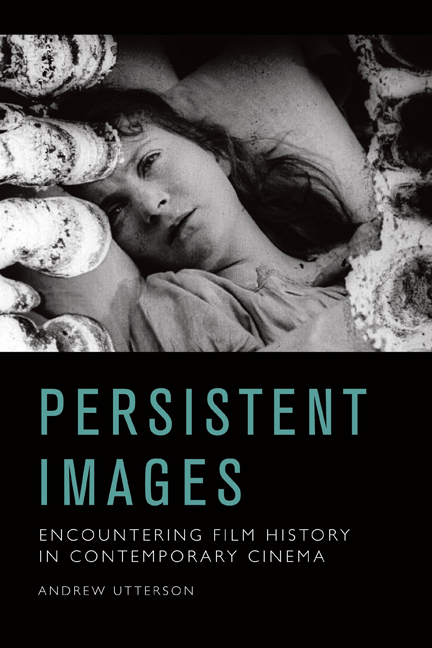Book contents
- Frontmatter
- Contents
- List of Figures
- Acknowledgements
- Introduction
- 1 Media Archaeology and the Memory of a Medium: Dawson City: Frozen Time
- 2 A Drone’s-Eye View of History: Francofonia
- 3 The Movie Theatre as Haunted Space: Shirin and 70×70
- 4 Recalling the Past Lives of Cinema: Uncle Boonmee Who Can Recall His Past Lives
- 5 3D Images at the Edge of History: Goodbye to Language and The Three Disasters
- 6 Voyaging in Deep Time: Voyage of Time: The IMAX Experience
- Notes
- Bibliography
- Index
6 - Voyaging in Deep Time: Voyage of Time: The IMAX Experience
Published online by Cambridge University Press: 26 September 2020
- Frontmatter
- Contents
- List of Figures
- Acknowledgements
- Introduction
- 1 Media Archaeology and the Memory of a Medium: Dawson City: Frozen Time
- 2 A Drone’s-Eye View of History: Francofonia
- 3 The Movie Theatre as Haunted Space: Shirin and 70×70
- 4 Recalling the Past Lives of Cinema: Uncle Boonmee Who Can Recall His Past Lives
- 5 3D Images at the Edge of History: Goodbye to Language and The Three Disasters
- 6 Voyaging in Deep Time: Voyage of Time: The IMAX Experience
- Notes
- Bibliography
- Index
Summary
As previous chapters have sought to illustrate, the sounds and images of film history are remarkably resilient, adapting to the present as reconfigured and reframed. In this concluding chapter, this cinematic reimagining occurs not via the amplified depth dimension of 3D, as discussed in Chapter 5, but in the expanded frames and screens of IMAX and the associated historical flows of moving images across time and technology.
If, as this book argues, film history is to be considered in its continuing resonances, the moving image itself can sometimes reveal the ways in which we might chart this history. That is, cinema offers its own visions for how we might place the contemporary cinematic moment into broader context, from micro to macro, and towards what Siegfried Zielinski, among others, has described as ‘deep time’ (see Zielinski 2006 [2002]), referring to the vast timescales involved in phenomena generally imperceptible to human senses and scales of experience and perception. This chapter maps the contours of one such expanded frame, analysing how Terrence Malick's Voyage of Time (2016), as an illustrative case study, engages theories of time and temporality, history and historicity, in relation to the past (or pasts) of cinema as it continues to reverberate in the present.
On the level of technology, the evolving cinematic apparatus offers a productive lens through which to reframe – both literally and figuratively – our understanding of cinema as a historical medium. Shifts in this apparatus – from imaging to exhibition – offer reconfigured means for addressing questions of history and historiography, with scientific notions of deep time and expanded temporality applied in the specific field of film history.
VOYAGE OF TIME: THE EXPANDED FRAMES OF IMAX
Considered in relation to conceptions of deep time – both that of the universe and that of cinema – and the visualisation or representation of these timespans, the documentary Voyage of Time – in its multiple versions, namely Voyage of Time: The IMAX Experience, Voyage of Time: Life's Journey and Voyage of Time: The IMAX Experience in Ultra Widescreen 3.6 – exists as a meditation on the changing technologies and aesthetics of cinema, including how we might historicise this medium on a micro- as well as a macro-historical scale.
- Type
- Chapter
- Information
- Persistent ImagesEncountering Film History in Contemporary Cinema, pp. 115 - 135Publisher: Edinburgh University PressPrint publication year: 2020



